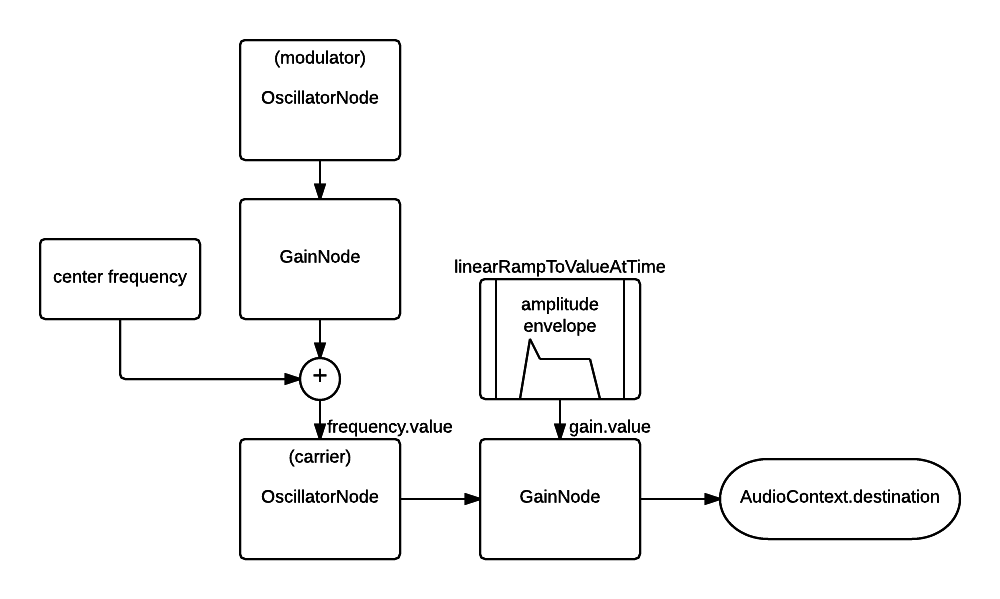
Play a tone with vibrato
This diagram demonstrates a simple audio graph for implementing a tone with vibrato. One oscillator, called the carrier oscillator, is the one we will listen to. Another oscillator, called the modulator, is not heard directly, but its effect is heard. It's set to a sub-audio frequency that will be heard as a rhythm rather than as a tone. This low-frequency oscillator ("LFO" for short), is used to modulate the frequency of the carrier oscillator up and down at the desired rate. The amplitude of the low-frequency oscillator determines its "depth" of influence, how wide a fluctuation it will cause.

In this case we're using a center frequency of 880 Hz for the carrier oscillator. For the modulating oscillator we use a frequency of 6 Hz and an amplitude of 20. The modulating oscillator is added to the center frequency constant. This means that as the modulator oscillates it causes a sinusoidal fluctuation of the carrier frequency up as high as 900 Hz and as low as 860 Hz, completing 6 up-down fluctuations per second. This is a relatively modest fluctuation in that region; 20 Hz is only a little more than 2% of 880Hz, causing a pitch variance of about 1/3 of a musical semitone. This is not enough to distract us from the central frequency, but it does give a somewhat human vocal quality to the tone.
This page was last modified April 7, 2016
by Christopher Dobrian, dobrian@uci.edu